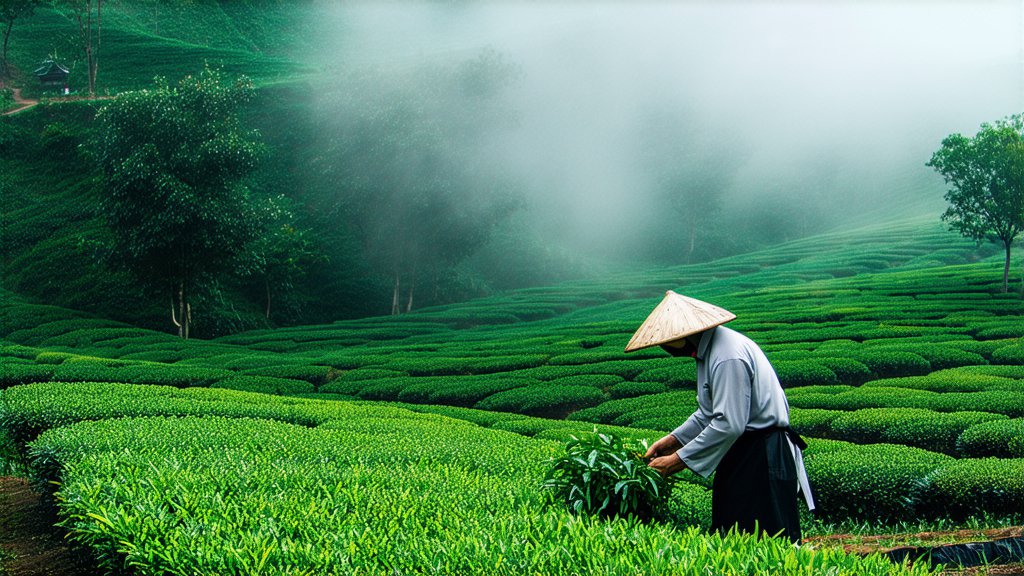
In the vast and diverse landscape of Chinese tea culture, where verdant greens, deep blacks, and pristine whites dominate the scene, there lies a hidden gem that shimmers with a unique golden hue - Junshan Yinzhen, a revered variety of Huangcha (Yellow Tea). This article embarks on a journey to unravel the mysteries surrounding this exquisite tea, delving into its storied past, intricate varieties, meticulous craftsmanship, and the art of its appreciation.
A Glimpse into History
Junshan Yinzhen, often hailed as the "King of Yellow Tea," traces its origins back to the early Tang Dynasty (618-907 AD), though its true prominence flourished during the Ming Dynasty (1368-1644 AD). Legend has it that this tea was first discovered by a local farmer named Wen Shiren, who stumbled upon the unique processing method that would give birth to Yellow Tea. Unlike its more popular counterparts, Junshan Yinzhen's production remained largely confined to the misty mountains of Junshan County in Hunan Province, preserving its exclusivity and allure.
Varieties and Classification
Junshan Yinzhen is not a single tea but a category encompassing several grades, each distinguished by the quality and size of the buds and leaves used. The highest grade, known as "Yinzhen" or "Silver Needle," consists solely of delicate, downy buds, resembling silver needles. The next grade, "Neifu," includes one bud accompanied by the first unfolded leaf, symbolizing the unity of heaven and earth. Lower grades incorporate older leaves, offering a broader flavor profile while still maintaining the essence of Junshan Yinzhen's elegance.
The Art of Craftsmanship
The magic of Junshan Yinzhen lies in its distinctive processing method, which sets it apart from other teas. After careful handpicking, the fresh leaves undergo a series of meticulous steps:
-
Withering: Freshly harvested leaves are spread out thinly under the sun or in a well-ventilated room to lose moisture gradually, allowing enzyme activity to begin subtly.
-
Fixing: Unlike green tea's high-heat fixing, Junshan Yinzhen is gently pan-fired at a lower temperature, halting enzymatic action without fully denaturing them, preserving a balance between freshness and subtle fermentation.
-
Wrapping: This unique step involves wrapping the fixed leaves in bamboo mats or cloth and leaving them to steam for several hours. This controlled environment encourages mild oxidation, giving the tea its characteristic yellow color and mellow taste.
-
Drying: Finally, the wrapped leaves are dried slowly to remove any remaining moisture, ensuring stability and longevity without compromising flavor.
The Symphony of Taste
To truly appreciate Junshan Yinzhen, one must engage in the ritual of tea tasting, a practice deeply rooted in Chinese tradition. Here’s how to embark on this sensory journey:
-
Warm the Teaware: Begin by rinsing your teapot and cups with hot water to cleanse them and elevate the tasting experience.
-
Measure and Infuse: Use approximately 3 grams of Junshan Yinzhen per 150ml of water. Pour hot water (around 80°C) gently over the leaves, allowing them to dance and unfurl.
-
Observe and Inhale: Admire the golden liquor's clarity and subtle aroma before taking a deep breath to capture the tea's fragrant bouquet.
-
Savor Slowly: Take small sips, letting the tea coat your palate. Notice the initial sweetness that gradually gives way to a complex medley of floral notes, herbaceous undertones, and a lingering aftertaste that speaks volumes of its craftsmanship.
-
Repeat: Junshan Yinzhen can be steeped multiple times, with each infusion revealing new layers of flavor and character.
Conclusion
Junshan Yinzhen stands as a testament to China's rich tea heritage, embodying the harmony between nature and human ingenuity. Its history whispers tales of ancient discoveries, its varieties showcase the diversity within a single tea type, and its meticulous production process highlights the artistry involved in creating this golden elixir. As you sip on a cup of Junshan Yinzhen, immerse yourself not just in the flavors but also in the centuries-old traditions that have been lovingly passed down through generations, shaping the very soul of Chinese tea culture.